 |

 |
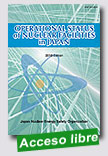 |
Operational Status of Nuclear Facilities in Japan
Japan Nuclear Energy Safety Organization, November 2010, 728 p.
This document is a summary of the outline of the safety regulation administration of nuclear facilities as well as various data on the commercial nuclear power reactor facilities, research and development nuclear power reactor facilities, fabrication facilities, reprocessing facilities, and disposal facilities in fiscal year 2009 (from April 2009 to March 2010). We sincerely hope this document is used widely by many people engaged in work related to ensuring nuclear safety. |
Extraído de:
http://www.jnes.go.jp/english/activity/unkan/e-unkanhp2/e-unkanhp2-2010/book1/book.pdf
|
 |
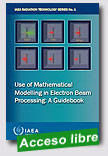 |
Use of Mathematical Modelling in Electron Beam Processing: A Guidebook
IAEA Radiation Technology Series, 2011, 117 p.
This guidebook is an introductory tutorial for the use of mathematical modelling (mostly Monte Carlo methods) in electron beam processing. It starts with an electron beam processing background presentation, and provides a short introduction to mathematical modelling in general. Typical irradiation problems are also addressed in examples with solutions which the reader can follow. The target audience of this guidebook is readers who have a basic understanding of electron beam technology and who want to evaluate and apply mathematical modelling for the design and operation of irradiators, and those who seek better understanding of the irradiation process and process development for new products. |
Extraído de:
http://www-pub.iaea.org/MTCD/publications/PubDetails.asp?pubId=8189 |
 |
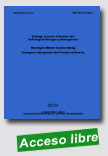 |
Strategic Aspects of Nuclear and Radiological Emergency ManagementPlanning for Effective Decision Making; Consequence Management and Transition to Recovery
Nuclear Energy Agency (NEA), 10/05/10, 72 p.
The collective experience of the NEA Working Party on Nuclear Emergency Matters (WPNEM), and in particular, the experience from the International Nuclear Emergency Exercise (INEX) series, has shown that it is important to plan and to implement emergency response actions based on a guiding strategic vision. Within this context, Strategic Aspects of Nuclear and |
Radiological Emergency Management presents a framework of strategic planning elements to be considered by national emergency management authorities when establishing or enhancing processes for decision making, and when developing or implementing protection strategies. The focus is on nuclear or radiological emergency situations leading to complex preparedness and response conditions, involving multiple jurisdictions and significant international interfaces.
The report is aimed at national emergency management authorities, international organisations and those who are seeking to improve the effectiveness of emergency management. Its goal is to provide insights into decision-making processes within existing emergency planning arrangements. It also highlights common areas of good practice in decision making. Specific areas for improvement, identified during the INEX-3 consequence management exercise, are included, particularly in support of decision making for countermeasures for consequence management and the transition to recovery.
|
 |
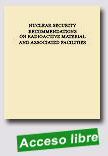 |
|
associated facilities and associated activities in order to reduce the likelihood of malicious acts involving those materials. These recommendations reflect a broad consensus among States on the requirements which should be met for the security of radioactive material, associated facilities and activities.
Extraído de:
http://www-pub.iaea.org/MTCD/publications/PubDetails.asp?pubId=8616 |
 |
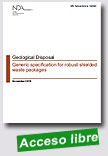 |
Geological Disposal - Generic specification for robust shielded waste packages
Nuclear Decomissioning Authority (UK), November 2010, 45 p.
The Radioactive Waste Management Directorate (RWMD) of the Nuclear Decommissioning Authority (NDA) has been established with the remit to implement the geological disposal option for the UK’s higher activity radioactive wastes. The NDA is currently working with Government and stakeholders as part of the Managing Radioactive Waste Safely (MRWS) process to plan the development of a geological disposal facility (GDF). RWMD, acting as implementer and future operator of a GDF, and |
therefore as the ultimate receiver of wastes for disposal, establishes standards and performance specifications for packaged waste. The primary purpose of these ‘waste package specifications’ is to enable the holders of radioactive wastes to condition those materials in a form that will be compatible with future transport to and disposal in a GDF.
The primary document which defines the packaging standards and specifications for waste packages containing intermediate level waste (ILW), and low level wastes (LLW) not suitable for near-surface disposal is the Generic Waste Package Specification (GWPS). This specification applies those generic requirements to waste packages manufactured using containers that provide sufficient radiation shielding and containment of their contents such that they can be managed in the long-term without the need for additional shielding or physical protection. This document provides a generic specification for such waste packages together with explanatory material and justification for each of the specified packaging criteria.
Extraído de:
http://www.nda.gov.uk/documents/loader.cfm?url=
/commonspot/security/getfile.cfm&pageid=44257 |
 |
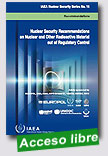 |
Nuclear Security Recommendations on Nuclear and Other Radioactive Material out of Regulatory Control
IAEA Nuclear Security Series, 2011, 33 p.
This publication presents recommendations for nuclear security of nuclear and other radioactive material that is out of regulatory control. It is based on national experiences and practices and guidance publications in the field of nuclear security as well as the nuclear security related international instruments. The recommendations include guidance to Member States with regard to nuclear security of nuclear and other radioactive material that has been reported as being out of regulatory
|
control as well as for material that is lost, missing or stolen but has not been reported as such, or has been otherwise discovered. In addition, these recommendations adhere to the detection and assessment of alarms and alerts and for a graded response to criminal or unauthorized acts with nuclear security implications.
Extraído de:
http://www-pub.iaea.org/MTCD/publications/PubDetails.asp?pubId=8622
|
 |
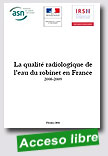
|
Bilan de la qualité radiologique des eaux du robinet en France (2008-2009)
Autorité de Sûreté Nucléaire (ASN), 23/02/2011, 56 p.
L’ASN, la DGS et l’IRSN dressent un second bilan de la qualité radiologique des eaux du robinet en France.
L’ASN, la Direction générale de la santé (DGS) et l’Institut de radioprotection et de sûreté nucléaire (IRSN) publient le deuxième bilan national 2008-2009 relatif à la qualité radiologique des eaux distribuées par les réseaux publics. Ce bilan a été réalisé à partir des résultats d’analyses du contrôle sanitaire effectué par les Agences Régionales de Santé (ARS).
|
Extraído de:
http://www.asn.fr/index.php/S-informer/Actualites/2011/Bilan-de-la-qualite-radiologique-des-eaux-du-robinet-en-France-2008-2009 |
 |
 |
The International Legal Framework for Nuclear Security
IAEA International Law Series, 2011, 23 p.
This publication brings together the primary legally binding international instruments and the internationally accepted non-binding instruments that constitute the international legal framework for nuclear security. It sets out the legislative bases for the mandate of the International Atomic Energy Agency in the area of nuclear security, in order to increase awareness of the Agency’s role in facilitating national, regional and international efforts to enhance nuclear security, including measures to protect against nuclear terrorism. It is intended that the overview
|
of the salient provisions of the relevant binding and non-binding instruments will increase understanding of the existing legal framework governing nuclear security and counter-terrorism and thereby assist States, intergovernmental organizations and other stakeholders in the implementation of those provisions at the national, regional and international level.
Extraído de:
http://www-pub.iaea.org/MTCD/publications/PubDetails.asp?pubId=8565 |
 |
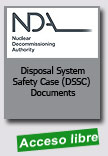 |
Disposal System Safety Case (DSSC) Documents
Nuclear Decomissioning Authority (NDA - UK), s. d., s. p.
A Disposal System Safety Case (DSSC) considers the safety of radioactive waste transport to a geological disposal facily (GDF) as well as the construction and operation of the facility and the safety of the facility in the very long term after it has been sealed and closed.
The safety case for a geological disposal facility is currently at an early state of development, as we do not have a site and no design for the facility has been chosen. We have therefore
|
described this Disposal System Safety Case as "generic" as it covers a range of possible disposal environments and facility designs.
The suite of documents we have produced to make up the generic Disposal System Safety Case show how we can have confidence in the safety of a geological disposal facility, based on our knowledge of the scientific and engineering principles that underpin geological disposal and the existing experience of managing radioactive wastes both in the UK and abroad.
Extraído de:
http://www.nda.gov.uk/aboutus/geological-disposal/rwmd-work/dssc/
|
 |
| 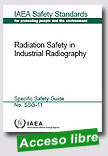
|
Radiation Safety in Industrial Radiography
IAEA Safety Standards Series, 2011, 104 p.
This Safety Guide provides recommendations for ensuring radiation safety in industrial radiography used in non-destructive testing. This includes industrial radiography work that utilizes X ray and gamma sources, both in shielded facilities that have effective engineering controls and in outside shielded facilities, using mobile sources.
Contents: 1. Introduction; 2. Duties and responsibilities; 3. Safety assessment; 4. Radiation protection programme; 5. Training and qualification; 6. Individual monitoring of workers; 7. Workplace monitoring; 8. Control of radioactive sources; 9.
|
Safety of industrial radiography sources and exposure devices; 10. Radiography in shielded enclosures; 11. Site radiography; 12. Transport of radioactive sources; 13. Emergency preparedness and response; Appendix: IAEA categorization of radioactive sources; Annex I: Example safety assessment; Annex II: Overview of industrial radiography sources and equipment; Annex III: Examples of accidents in industrial radiography.
Extraído de:
http://www-pub.iaea.org/MTCD/publications/PubDetails.asp?pubId=8500 |
|
